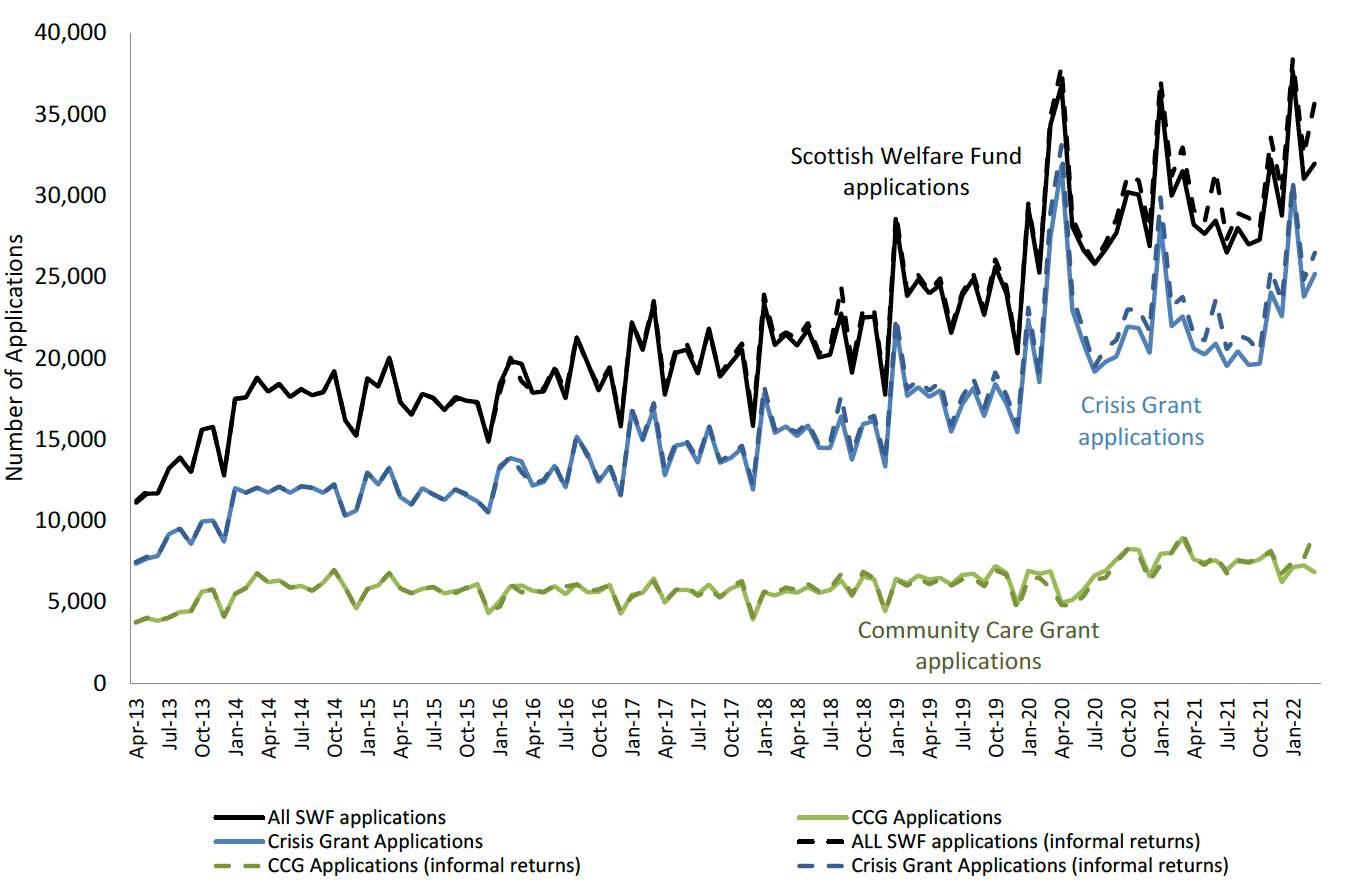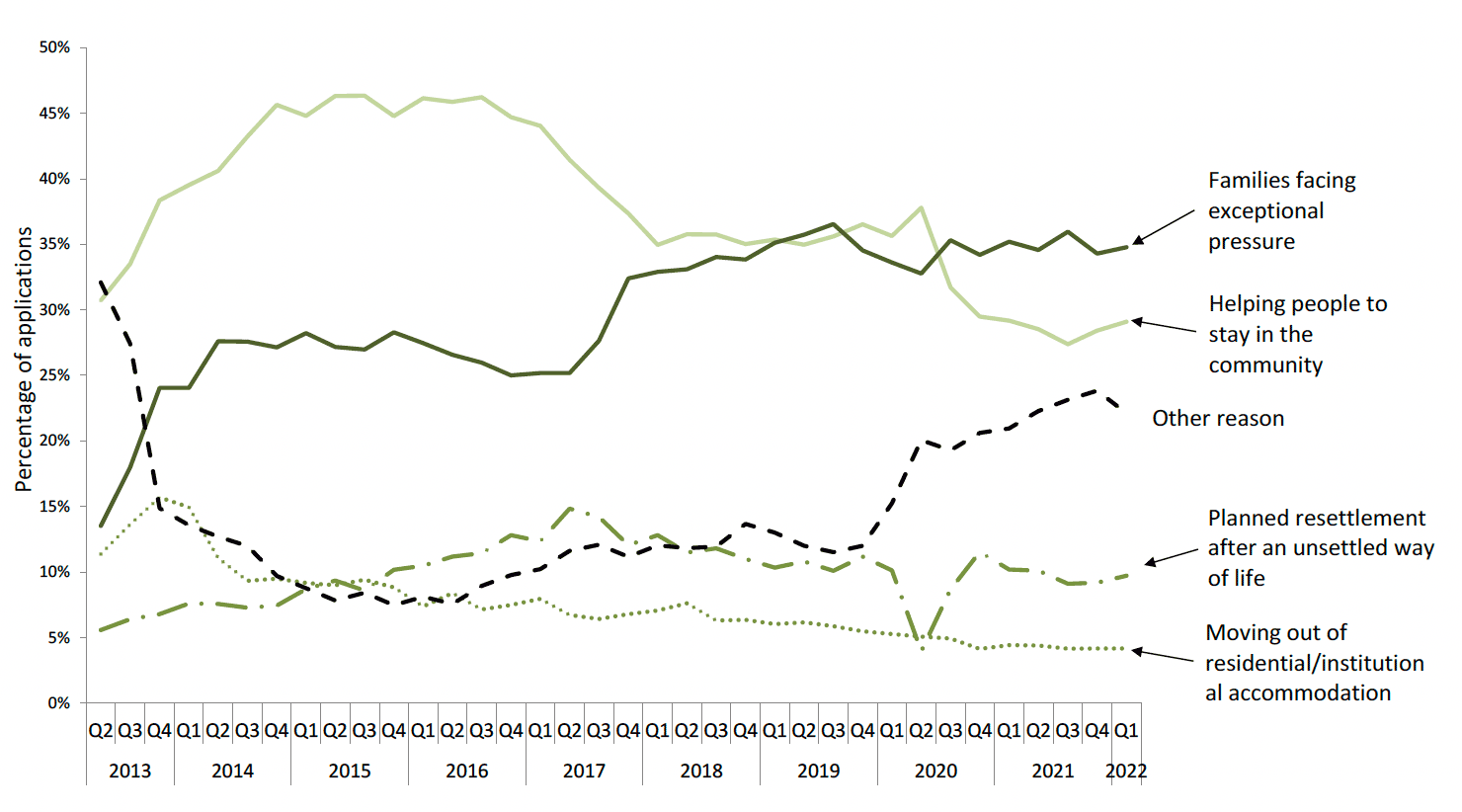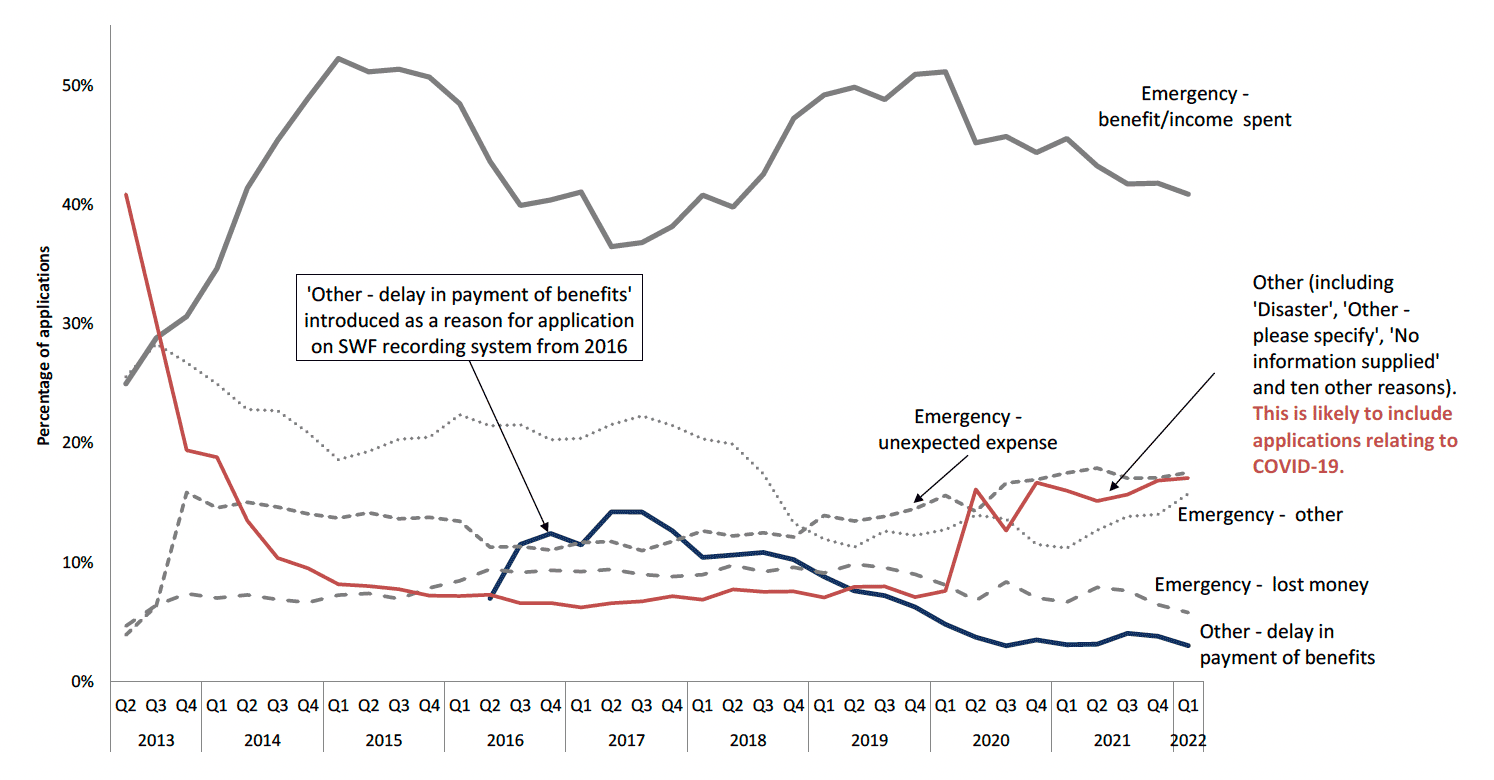Scottish Welfare Fund Statistics: Annual Update: 2021-22
The Scottish Welfare Fund comprises Community Care Grants – which help people to live independently – and Crisis Grants, which provide a safety net in a disaster or emergency.
This publication provides information on the SWF for 2021/22, and since 2013 when the scheme began.
This document is part of a collection
Applications
A total of 356,165 applications to the Scottish Welfare Fund were received in 2021-22, a slight decrease compared to 2020-21 (Table 2), the majority were for Crisis Grants (268,265, Table 6), and a smaller proportion were for Community Care Grants (87,900, Table 4).
Compared to 2020-21, the number of Community Care Grant applications increased by 4% (2,980) (Table 4, Chart 1), continuing an upward trend since 2017/18. At local authority level this varied from a 25% decrease in West Dunbartonshire to a 38% increase in Na-h Eileanan Siar (Table 4).
The number of Crisis Grant applications decreased by 1% (3,440) (Table 6, Chart 1), the first decrease on record, although remaining close to the 2020-21 peak. At local authority level, this varied from a 29% decrease in Clackmannanshire to a 53% increase in Highland (Table 6).
Applications to the Scottish Welfare Fund peaked in April 2020, January 2021 and January 2022. In January 2022, there were 4% more Scottish Welfare Fund applications than in January 2021, according to the Official Statistics (Chart 1). The April 2020 peak was due to an increase in Crisis Grant applications (+81%) that was likely due to the impacts of COVID-19. The January 2021 peak was due to increases in both Crisis Grants (+27%) and Community Care Grants (+15%), and the January 2022 peak related to an increase of 8% in Crisis Grants; while increased Scottish Welfare Fund applications in January are consistent with previous years, it is likely that this was also due to impacts of COVID-19.

The most common reason for Community Care Grant applications was 'Families facing exceptional pressure' (35% of applications) (Table 8). This reason increased slightly compared to 2020-21, and remains ahead of 'Helping people to stay in the community' (28% of applications), the most common reason in previous years, which decreased by three percent compared to 2020-21. The number of applications due to 'Other' reasons increased by 16% compared to 2021-22. This category is likely to include applications that local authorities have recorded the reason as 'COVID-19' or similar on their own software systems, or could indicate a decrease in data quality due to additional pressures related to COVID-19.

The most common reasons for Crisis Grant applications are different types of emergency (84% applications in 2021-22), whereas disasters such as fires and floods are less common (fewer than 1% of applications) (Table 11, Chart 3).
The most common reason remained 'Emergency - benefit/income spent' (42% of applications) although this decreased by 9% (11,130 applications) compared to 2020-21 (Table 11). The second most common reason was 'Emergency – unexpected expense' which increased by 5% (2,215 applications) compared to 2020-21. There were also increases in applications due to 'Emergency – other' reasons (+11%, 3,740 additional applications), 'Disaster – other' (+38%, 360), 'Other – delay in payment of benefits' (+2%, 191), 'Emergency – travel (+31%, 149), compared with 2020-21. Applications recorded as other reasons may relate directly to COVID-19, or to a decrease in data quality. (Table 10, Chart 3).

Contact
Email: SocialSecurityStats@gov.scot
There is a problem
Thanks for your feedback